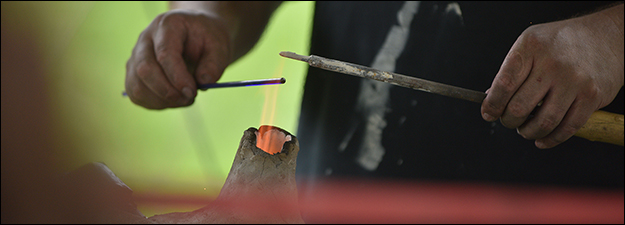Concepts of Camelot
Sponsoring Organization(s)
Arthurian Literature
Organizer Name
Elizabeth Archibald, David F. Johnson
Organizer Affiliation
Durham Univ., Florida State Univ.
Presider Name
Elizabeth Archibald
Paper Title 1
Empty Seats at the Round Table: Malory's Incomplete Idea of Camelot
Presenter 1 Name
Molly Martin
Presenter 1 Affiliation
Univ. of Indianapolis
Paper Title 2
Bringing Camelot Down to Earth: The Feudal Ideal in Malory's Arthurian World
Presenter 2 Name
Stephen Atkinson
Presenter 2 Affiliation
Park Univ.
Paper Title 3
White's Camelot, Malory's Camelot
Presenter 3 Name
Louis J. Boyle
Presenter 3 Affiliation
Carlow Univ.
Paper Title 4
Cadbury and The Camelot Caper
Presenter 4 Name
Norris J. Lacy
Presenter 4 Affiliation
Pennsylvania State Univ.
Start Date
12-5-2016 3:30 PM
Session Location
Valley III Stinson Lounge
Description
'Camelot, located nowhere in particular, can be anywhere’, according to Norris Lacy. It is both a place and a concept. First mentioned by Chrétien de Troyes in the twelfth century, it moves around geographically but is almost more important as the primary evocation of the Arthurian ideal. This is perhaps even truer of post-medieval culture, as is evidenced by the use of the name in connection with President Kennedy. This session invites consideration of both city and concept(s). Louis Boyle will compare the way Camelot society is depicted by Malory and by White in the 'Poisoned Apple' episode. Molly Martin will consider the interrelationship of physical and social space in terms of the Round Table ideology and the communal identity of Camelot. Norris Lacy will discuss how Camelot may differ from other castles in relation to Elizabeth Peters' novel _The Camelot Caper_,in which Camelot is situated at Cadbury.
Elizabeth Archibald
Concepts of Camelot
Valley III Stinson Lounge
'Camelot, located nowhere in particular, can be anywhere’, according to Norris Lacy. It is both a place and a concept. First mentioned by Chrétien de Troyes in the twelfth century, it moves around geographically but is almost more important as the primary evocation of the Arthurian ideal. This is perhaps even truer of post-medieval culture, as is evidenced by the use of the name in connection with President Kennedy. This session invites consideration of both city and concept(s). Louis Boyle will compare the way Camelot society is depicted by Malory and by White in the 'Poisoned Apple' episode. Molly Martin will consider the interrelationship of physical and social space in terms of the Round Table ideology and the communal identity of Camelot. Norris Lacy will discuss how Camelot may differ from other castles in relation to Elizabeth Peters' novel _The Camelot Caper_,in which Camelot is situated at Cadbury.
Elizabeth Archibald

